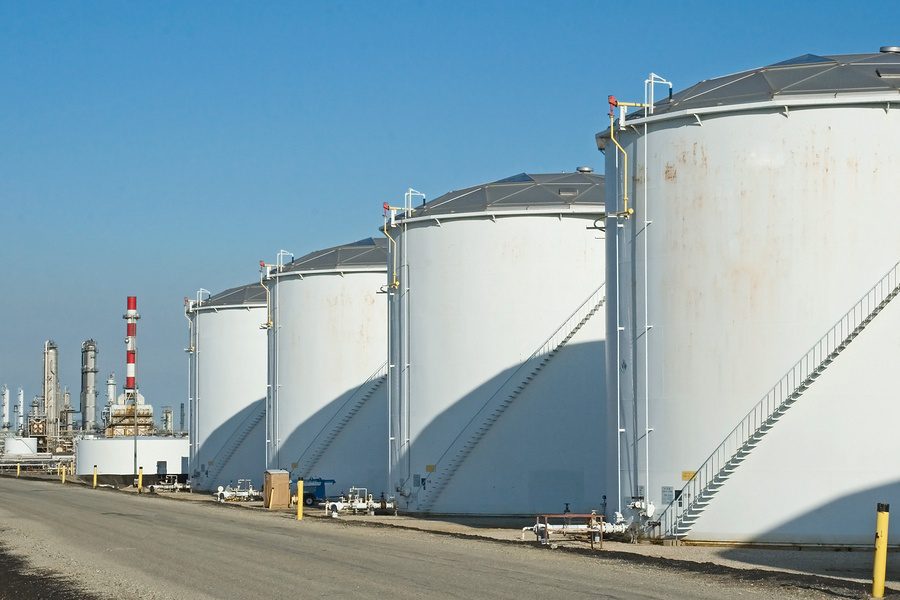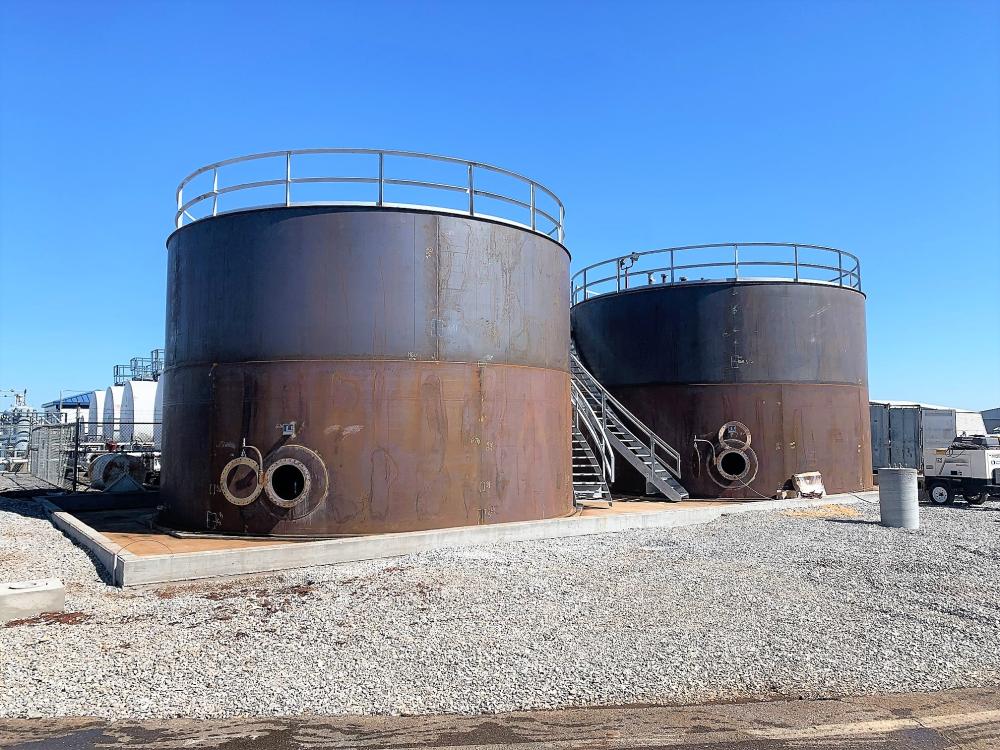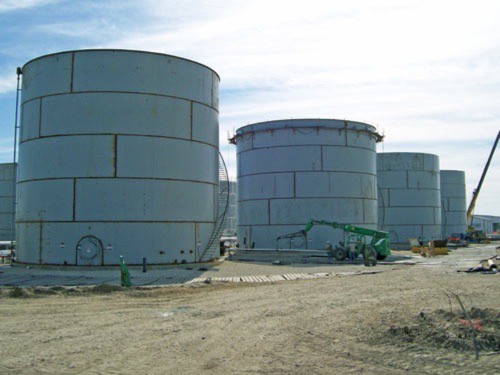A Step-by-Step Take A Look At the Setup Process of Welding Examination Techniques
Welding examination is a crucial process that ensures structural honesty and security. The setup of evaluation methods involves a number of methodical steps, each integral to achieving trusted results. From preparation and device selection to carrying out aesthetic and non-destructive tests, each phase needs mindful focus. Recognizing these treatments can substantially boost quality control in welding projects. What challenges occur in carrying out these methods, and how can they be successfully attended to?
Understanding the Importance of Welding Assessment
Welding evaluation is an essential component of making sure structural honesty and safety and security in building and construction and production procedures. This practice involves evaluating welded joints for problems, making sure that they meet details standards and regulations. By systematically assessing weld top quality, examiners can recognize problems such as cracks, gaps, and insufficient combination, which can compromise the strength and toughness of frameworks.
The importance of welding assessment prolongs beyond instant safety and security concerns; it assists stop pricey failings and potential threats in the lengthy term. Efficient inspection techniques foster conformity with market requirements, therefore boosting the general dependability of bonded components. In addition, a robust examination process adds to maintaining the track record of suppliers and contractors, as it ensures clients of the quality of their jobs. Eventually, recognizing the relevance of welding assessment is important for advertising secure building practices and ensuring the durability of crucial facilities and items.
Selecting the Right Equipment for Evaluation
When selecting the appropriate tools for assessment, it is necessary to consider the particular requirements of the welding process and the products involved. Numerous evaluation methods, such as visual, ultrasonic, and radiographic screening, necessitate unique devices tailored to their special needs. For visual evaluations, tools like magnifying glasses and calipers are critical for evaluating weld high quality. Ultrasonic screening calls for customized tools with the ability of transferring and getting audio waves to spot internal defects. Radiographic screening, on the other hand, utilizes X-ray or gamma-ray resources together with delicate movie or digital detectors to expose incongruities.
In addition, individual protective devices (PPE) is vital to assure the safety of inspectors throughout analyses. Choosing the right devices not only improves the precision of examinations but also contributes to the general honesty and safety and security of the welding task. A thorough understanding of readily available devices and their applications is necessary for effective welding evaluation.
Preparing for the Inspection Refine
Before starting the assessment process, it is vital to develop a complete plan that lays out the scope and purposes of the evaluation. This strategy must include particular standards that specify what makes up acceptable top quality in the welding work being evaluated. Identifying the pertinent codes and criteria is important, as they will certainly guide the assessment criteria and methods.
In addition, employees involved in the examination needs to be adequately trained and certified in welding inspection methods to guarantee dependability and accuracy. A list can be beneficial in organizing the numerous aspects of the evaluation, ranging from equipment preparedness to ecological problems that can affect the assessment.

Lastly, logistical considerations such as scheduling, readily available resources, and communication in between employee need to be attended to. By preparing methodically, examiners can boost the performance of the analysis and make sure that all crucial variables are properly taken into consideration prior to proceeding with the assessment itself.
Performing Visual Examinations

Performing visual assessments is a crucial step in the welding inspection procedure, needing mindful prep work to ensure effective assessment. Examiners have to know with key flaw indications that can indicate possible problems in weld quality. By focusing on these elements, one can enhance the overall dependability of the examination end results.
Preparing for Visual Examination
Visual evaluation acts as a vital initial step in the welding evaluation procedure, guaranteeing that any possible issues are recognized early (API 650 Welding Inspection). Proper prep work is essential for effective aesthetic evaluation. Assessors need to begin by reviewing pertinent documents, consisting of welding treatments and specifications, to recognize the job demands. They need to collect needed tools, navigate here such as multiplying glasses, flashlights, and ideal individual protective equipment (PPE) A detailed assessment of the examination location is critical; assessors should verify it is totally free and tidy of blockages. Furthermore, it is essential to develop excellent lighting conditions to enhance visibility of welds. By taking these primary steps, assessors can create an atmosphere favorable to recognizing discrepancies and assuring the stability of the bonded structures
Trick Issue Indicators
A comprehensive understanding of essential flaw signs is necessary during aesthetic inspections to assure the top quality and safety of bonded joints. Examiners ought to concentrate on certain indications such as cracks, porosity, damages, and incomplete fusion. Fractures might show up as sharp lines and can jeopardize architectural integrity. Porosity materializes as little openings that can damage weld stamina. Undercuts, which are grooves along the weld side, can result in stress and anxiety focus. Incomplete combination indicates that the weld metal did not effectively bond with the base material, resulting in a weak joint. By methodically identifying these flaws, inspectors can identify compliance with sector requirements and boost the total reliability of welded structures, ultimately adding to much safer operational problems.
Implementing Non-Destructive Evaluating Methods

Various non-destructive testing (NDT) methods are essential to ensuring the stability of bonded structures without compromising their performance. These approaches enable examiners to assess weld top quality and identify problems without causing damage to the products being tested. Usual NDT techniques consist of ultrasonic screening, radiographic testing, magnetic bit testing, and color penetrant screening. Each method offers a details objective, attending to various kinds of defects such as splits, porosity, or incomplete blend.
Executing NDT strategies calls for a systematic method, beginning with picking the ideal method based on the materials and the nature of the weld. Educating employees in these methods is necessary for precise results. Additionally, establishing clear treatments and criteria assurances consistency throughout the evaluation procedure. By integrating NDT into the welding assessment operations, organizations can boost the integrity of their products while minimizing possible risks connected with structural failings. This proactive strategy inevitably adds to keeping security and quality criteria in bonded buildings.
Analyzing and documenting Evaluation Outcomes
Reliable paperwork and analysis of assessment outcomes are crucial parts of the welding assessment procedure. click reference Exact records of examination searchings for act as a referral for quality control and compliance with sector criteria. API 650 Welding Inspection. Inspectors need to make use of organized types or digital platforms to log details such as the sort of weld, inspection techniques used, and any type of disparities determined during the examination
Complete evaluation is crucial once information is gathered. This entails comparing outcomes against established criteria to determine trends or persisting problems. Statistical tools may be used to measure flaws and examine their influence on overall weld high quality.
Efficient interaction of searchings for to relevant stakeholders is imperative. Recaps and records must be concise and clear, highlighting vital insights and recommendations for corrective actions. By methodically assessing and documenting click here now assessment outcomes, organizations can cultivate constant improvement in welding practices and improve product stability.
Frequently Asked Concerns
What Credentials Are Needed to End Up Being a Welding Inspector?
To end up being a welding examiner, one commonly needs appropriate certifications such as AWS CWI, in addition to experience in welding techniques, knowledge of welding codes, and proficiency in assessment techniques to guarantee quality and security criteria.
Exactly How Frequently Should Welding Inspections Be Performed?
Welding assessments must be carried out on a regular basis, generally after each weld is completed, and regularly throughout projects. Aspects such as task complexity, market requirements, and regulatory needs can influence the regularity of these inspections.
What Is the Expense of Welding Evaluation Services?
The price of welding assessment services varies significantly based on factors such as task intricacy, dimension, and location. Usually, costs vary from $100 to $150 per hour, with extra costs for specialized screening and certifications.
Exist Certifications for Welding Inspectors?
Yes, there are different accreditations for welding assessors, including those used by the American Welding Society (AWS) and the International Institute of Welding (IIW) These certifications assure examiners have the required skills and understanding for reliable examinations.

Exactly how Do I Choose an Inspection Solution Supplier?
To pick an assessment solution provider, one must examine qualifications, experience, industry reputation, and client testimonials. In addition, contrasting service offerings and pricing can aid ensure the chosen provider meets particular task requires properly.
Furthermore, employees involved in the examination must be appropriately educated and accredited in welding evaluation methods to ensure dependability and accuracy. Performing visual inspections is a crucial action in the welding assessment process, needing mindful prep work to guarantee efficient evaluation. Visual evaluation offers as a vital initial action in the welding evaluation procedure, ensuring that any potential issues are identified early. Reliable documents and analysis of examination results are vital components of the welding evaluation procedure. Welding examinations must be performed regularly, normally after each weld is completed, and occasionally during jobs.